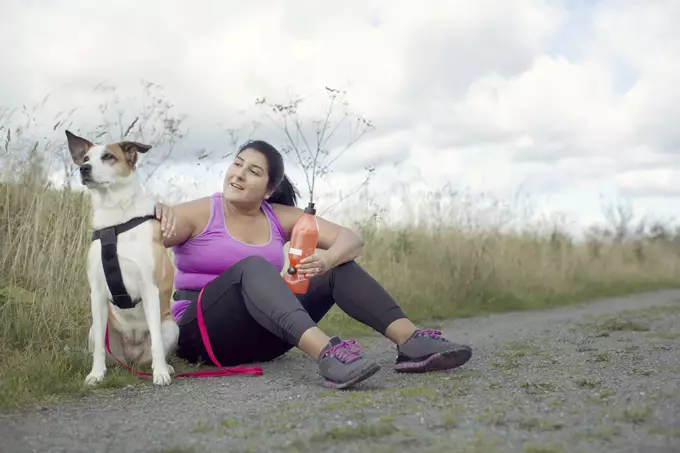As pet owners, we often find ourselves preoccupied with the joy and companionship our furry friends bring into our lives. However, an alarming number of pets today face an issue that parallels a significant health crisis in humans: obesity. High-stakes risks associated with obesity are not limited to just humans; our dogs are increasingly susceptible to this condition, which can lead to severe health complications, including diabetes, arthritis, and heart disease. Dr. Susan Nelson, a veterinarian at Kansas State University, stresses that regular physical activity plays a crucial role in maintaining a healthy weight for dogs. But weight management is just one facet of why exercise is essential for your canine companion.
The Impact of Exercise on Behavior and Wellbeing
Physical activity serves as more than a mechanism for weight control; it significantly influences a dog’s mental and emotional health. Dogs are social creatures that thrive on interaction and stimulation. Without sufficient exercise, they may resort to destructive behaviors, driven by pent-up energy and boredom. Regular activity helps alleviate these issues, resulting in a happier, more well-adjusted pet. Furthermore, engaging in exercise routines can deepen the bond between pet owners and their dogs, creating a sense of companionship and mutual joy. The importance of this connection cannot be overstated; a strong human-animal bond significantly impacts the overall happiness of both the pet and the owner.
One size does not fit all when it comes to canine exercise. The type and amount of physical activity required vary among individual dogs based on factors such as age, breed, health status, and climate. Dr. Nelson advises consulting your veterinarian before initiating a new exercise regimen to ensure that it aligns with your dog’s specific needs. For example, larger breeds or working dogs generally have higher energy levels, necessitating more rigorous activity. In contrast, toy and smaller breeds tend to require less intense exercise.
Additionally, the frequency of exercise is crucial. Ideally, dogs should engage in physical activity at least twice a day, aiming for durations between 15 to 60 minutes. However, simply letting your dog loose in the backyard won’t suffice. The key is to provide continuous, aerobic activity with minimal breaks. While pets may enjoy relaxing in the sun, they may not initiate the right level of exercise without encouragement from their owners.
There are countless activities that both you and your dog can enjoy while keeping their unique needs and interests in mind. For instance, medium to large dogs often make excellent running partners. If your pup excels in longer distances, consider biking while the dog runs beside you—ensuring safety by using a leash. Smaller dogs, however, generally fare better with shorter runs or walks.
If your dog loves catching frisbees, always consider low throws to prevent potential joint injuries from extensive leaps. Herding breeds, including Border Collies and Australian Shepherds, excel in activities like agility courses and competitive sports. Meanwhile, retrieving breeds, such as Labrador Retrievers and Golden Retrievers, typically thrive in fetching games, whether using tennis balls, sticks, or specialized toys.
Swimming is another valuable exercise form, particularly during warmer months, as it is gentle on joints and provides a refreshing way to cool down. Additionally, mental stimulation is vital for a dog’s overall wellbeing. Activities such as hidden object searches and laser light games keep brainpower engaged, especially for intelligent breeds like Border Collies.
Although exercise is essential for your dog’s health, it is critical to approach it with caution to avoid injury. Dogs need to be physically conditioned before engaging in high-intensity workouts. Gradually increasing their distance is crucial—particularly during the transitional phase from soft grass to hard surfaces.
Moreover, the environmental elements play a significant role in a dog’s comfort during exercise. During hot summer months, always take precautions against heat exhaustion. Short-nosed breeds, like Bulldogs and Boston Terriers, are particularly vulnerable, as their ability to cool down is limited. Always monitor your dog for signs of overheating; symptoms may include excessive panting, a dark red tongue, or thick saliva.
Equally important, one must not overlook the risks in colder weather. Frostbite poses threats to exposed skin and paw pads, with icy conditions leading to injuries due to slips and falls. When venturing out in wintertime, consider dressing your dog in a jacket to combat the chill, particularly for short-haired breeds.
Establishing an active lifestyle for your dog is essential, but it should never happen at the expense of their health and safety. Each pet has unique needs that must be carefully considered and catered to with the right type of exercise. By fostering a culture of activity and engagement, we can significantly improve our dogs’ physical and emotional wellbeing while strengthening our shared bond. Always remember: the time and effort you invest in your dog’s health today will pave the way for a happier, healthier future together.

